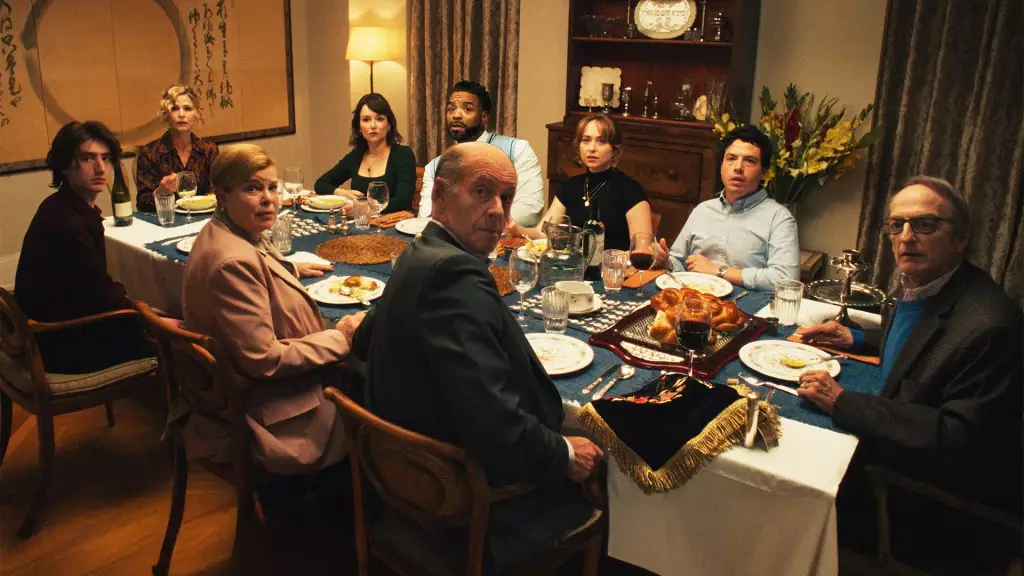In recent months, a remarkable pattern has emerged within the American independent film scene: small, unconventional movies are not only finding audiences but also demonstrating resilience against the dominance of blockbuster entertainment. Titles like Menemsha Films’ *Bad Shabbos*, *Hundreds of Beavers*, and the documentary *Secret Mall Apartment* highlight an industry trend rooted in authenticity, intellectual curiosity, and often quirky storytelling. Their gradual yet persistent box office performance defies the traditional Hollywood narrative that only big-budget spectacles can succeed. This is not coincidental but indicative of a broader cultural shift, perhaps signaling that Americans crave films that reflect their diverse experiences and challenge the homogenized fare churned out by major studios.
What is intriguing is how these indie releases maintain steady runs over months, often relying heavily on word-of-mouth promotion rather than massive marketing campaigns. *Bad Shabbos*, for example, initially limited itself to Florida but gradually expanded, resonating with viewers seeking relatable, humorous, and culturally nuanced stories. The film’s success underscores an essential truth: audiences today desire narratives that reflect real-life complexities rather than superficial escapism. This trend suggests a society increasingly skeptical of passive entertainment, instead yearning for content that fosters reflection and genuine connection.
Economic Viability and Market Dynamics: Challenging the Blockbuster Paradigm
Despite their modest opening grosses—often around $30,000 to $50,000 on limited screens—these independent films accumulate impressive totals through sustained theatrical runs. *Bad Shabbos* exemplifies this, having grossed over $250,000 with extended runs in cities such as Boston, LA, and San Francisco. The strategy is clear: filmmakers and distributors recognize that by maintaining a presence in theaters, they leverage word-of-mouth to organically grow audiences. Neil Friedman, president of Menemsha Films, rightly states that “word of mouth remains the most powerful advertising tool,” and savvy indie distributors are betting on patience rather than aggression.
This calculated approach challenges the conventional wisdom that only blockbuster hits can sustain film theatricality. It highlights a marketplace where quality, cultural relevance, and timing matter more than overwhelming marketing budgets. In this context, traditional Hollywood’s focus on spectacle and franchise-driven models appears increasingly disconnected from the realities of local and niche markets. As indie films gain momentum, they further fracture the monopoly of the major studios, offering diversified content and demonstrating that, in today’s digital-driven world, persistence and authenticity are potent tools for success.
Audience Preferences and the Power of Authenticity
The appeal of these indie films lies in their authentic storytelling. *Bad Shabbos* revolves around a humorous yet poignant collision of cultural and religious identities, featuring a diverse cast including Method Man and Milana Vayntrub—an eclectic mix that resonates with increasingly multicultural audiences. Such diversity reflects an electorate and society that are more aware than ever of different identities, beliefs, and lifestyles. When films like this gather a dedicated fanbase, they transcend the usual niche confines, becoming community touchstones.
More broadly, these films challenge Hollywood’s tendency toward formulaic narratives. Audiences are not just passive consumers but active participants who seek meaningful content. The success of these modestly budgeted productions proves that entertainment grounded in cultural specificity, humor, and realism can carve out a significant niche in a crowded market. This, in turn, raises questions about the future of Hollywood’s business model: will it adapt, or will it continue to ignore the fruitfulness of niche markets?
The Role of Cultural Politics and Market Realities
From a political perspective, the rise of these indie successes demonstrates a cautious optimism for a society that still values local voices and personal stories over the dictated narratives of conglomerates. While Hollywood often prioritizes global appeal and franchise stability, the independent scene shows that there is still room for smaller, more authentic voices that appeal to specific cultural or demographic groups. These films serve as a reminder that America, despite overarching cultural conflicts, remains a nation of diverse communities eager for representation.
Furthermore, their endurance suggests that viewers are hungry for a more nuanced understanding of American life—one that includes multicultural, religious, and socio-economic perspectives. This is critical, especially as larger media giants continue to chase homogenized global markets, often at the expense of genuine cultural diversity. The indie scene offers a counter-narrative: a reminder that true connection and cultural relevance are achieved through authentic storytelling rooted in real communities.
Overall, the steady rise and enduring performances of these indie films could very well mark a turning point—a recalibration of what American audiences value in entertainment. It challenges the supremacy of franchise entertainment and points to a more sustainable, diverse future rooted in authenticity, community resonance, and cultural pluralism. These films might not dominate the box office in the way Hollywood blockbusters do, but their influence, both economically and culturally, is undeniable.

